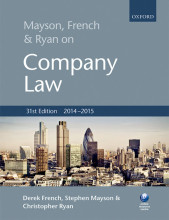EU COMPETITION LAW - Article 102: Abuse of A Dominant Position
12 important questions on EU COMPETITION LAW - Article 102: Abuse of A Dominant Position
What is the role of Article 102 TFEU?
What are the characteristics of monopoly?
- Monopoly involves one firm which controls the market for a particular product which has no close substitutes.
- Monopoly requires long term barriers to entry.
- Monopolists can raise price and limit supply.
- Monopolists normally do not have incentive to innovate
- Monopoly's profits can cause economically inefficiency
- However, pure monopoly is rare.
Article 102 TFEU: The Prohibition
- Higher grades + faster learning
- Never study anything twice
- 100% sure, 100% understanding
What are the essential ingredients contained in Article 102?
- An undertaking
- Dominance
- "Internal market or substantial part of it"
- Abuse
- "Affect trade between MS"
- Defences
- Consequences
What is the scope of Article 102 TFEU?
- A dominant position is not unlawful in itself. It is the abuse of this position which is prohibited.
- Abuse has been construed widely by the Commission and Union courts to include:
- exploitative abuse (Exploits customers or consumers)
- exclusionary (anti-competitive) abuse (Excludes competitors from market)
- single market abuse.
What are the criticisms of Commission and Courts' application of Article 102 TFEU?
- Controversy over findings of dominance
- Adoption of a formalistic approach rather than an effects based approach
- Unclear and inconsistent policy objectives (Should Article 102 TFEU be used to protect consumers, competitors or both?)
What does the Guidance confirm of Article 102 TFEU?
Does it include joint or collective dominance by one of more independent undertakings in an oligopolistic market?
T-68, 77-78/89 Re Italian Flat Glass: Yes. Three Italian producers of flat glass, who held between 79% to 95% of the Italian market between them, had a collective dominant position in the market and had abused that position.
Examples of abuse are provided by Article 102(a)-(d)
(b) - Limiting production, markets, or technical development to the prejudice of consumers
(c) - Applying dissimilar conditions to equivalent transactions with other trading parties, thereby placing them at a competitive disadvantage
(d) - Making the conclusion of contracts subject to acceptance by the other parties of supplementary obligations which, by their nature or commercial usage, have no connection with the subject of such contracts.
Cases 6 & 7/73 Commercial Solvents
C-468/06 Sot. Lelos
Private enforcement (more encouraged)
The question on the page originate from the summary of the following study material:
- A unique study and practice tool
- Never study anything twice again
- Get the grades you hope for
- 100% sure, 100% understanding

Topics that are related to EU COMPETITION LAW - Article 102: Abuse of A Dominant Position
-
EU COMPETITION LAW - Article 102: Abuse of A Dominant Position - Post-Guidance: Judgments of Union Courts
-
EU COMPETITION LAW - Article 102: Abuse of A Dominant Position - Element 2: Joint Dominance
-
EU COMPETITION LAW - Article 102: Abuse of A Dominant Position - Element 2: Dominance
-
Article 102: Abuse of A Dominant Position - Element 3 - Abuse - Exploitative Abuse
-
Element 3 - Abuse - Exclusionary Abuse - Refusal to Supply






























